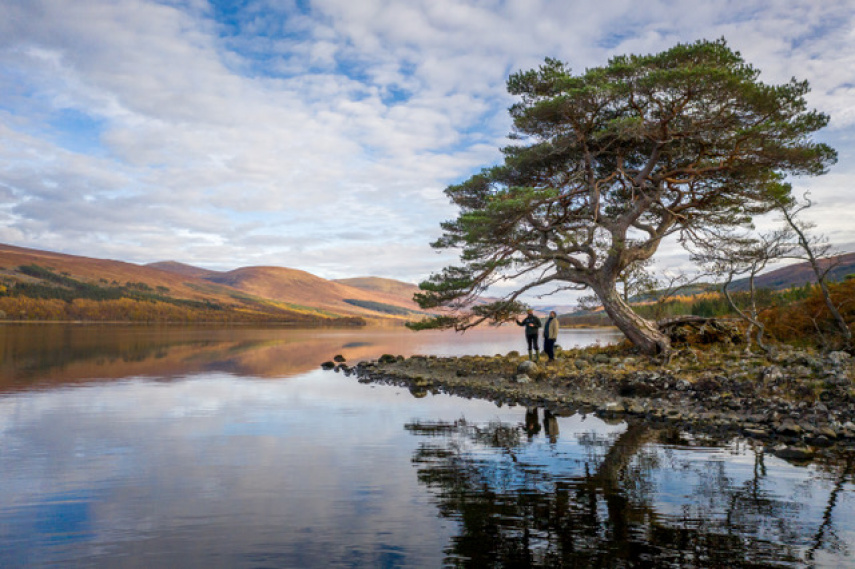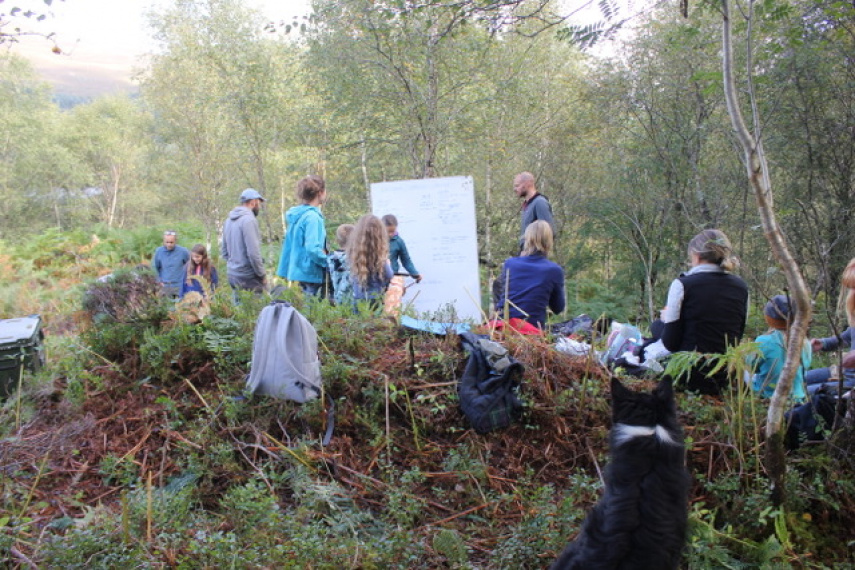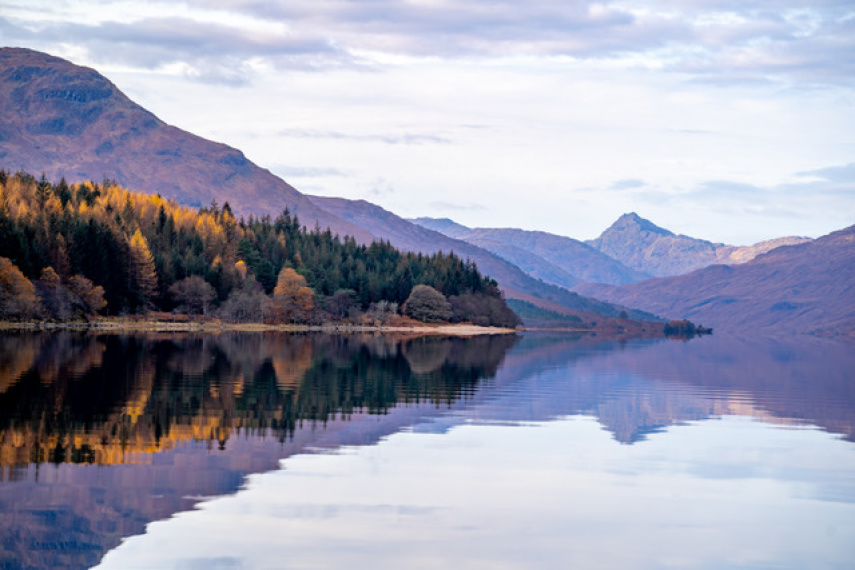Loch Arkaig Pine Forest – Land Management Planning
The estate
Loch Arkaig Pine Forest lies in Lochaber on the south side of Loch Arkaig and west of the small communities of Achnacarry, Bunarkaig and Clunes. Over 1,000 hectares in two separate woodlands contain a mix of remnant Caledonian pine, upland birch and oak, wet woodland and plantations on ancient woodland (PAWS).
Arkaig Community Forest acquired Loch Arkaig Pine Forest in 2016, in partnership with the Woodland Trust, a UK-wide charity. The two organisations collaborate closely on management of the site, underpinned by a memorandum of understanding and overseen by an independent advisory board.
We spoke about land management planning with Woodland Trust Project Development Manager, Dr Jessica Maxwell.

The planning process
Each site belonging to the Woodland Trust has its own management plan, publicly available on its website, Jessica tells us. “That's a live document in which minor changes can be made periodically and subject to a full review every five years. The Loch Arkaig Pine Forest land management plan was published in 2019 and will be up for review in two years’ time.”
Land management planning at every site begins from the Trust’s three strategic aims:
- To protect ancient woodland which is rare, unique and irreplaceable
- To promote the restoration of damaged ancient woodland
- To plant native trees and woods to benefit people and wildlife.
Flowing from these are a set of guidelines that structure and direct the management planning at each site. All this provides an overarching framework for site management, while the local dimension is embodied in the Key Features identified for each site. The land management plan examines each of these in turn, details its significance, identifies opportunities, constraints and factors causing change, and states the five-year and 50-year objectives for each feature.
Key features are site-specific and can relate to resources, environment, collaboration or indeed anything important enough to act as a focus for planning and future action. Of the five key features identified for Loch Arkaig Pine Forest, three concern the natural and cultivated environment (Planted Ancient Woodland Sites, Ancient Semi-Natural Woodland, Open Ground Habitat), while the other two are about people and relationships – Community Woodland Group and Connecting People with Woods and Trees.

Arkaig Community Forest and Woodland Trust acquired the Loch Arkaig site in 2016, so the current land management plan is the first, Jessica says. “It took a few years to survey and understand what we have on the site and to develop a shared vision with our partner community charity for what we wanted to do – and how and when. We undertook multiple consultation exercises to develop the current plan, to make sure we were aligned in our long-term vision with the community. This involved face-to-face workshops and co-drafting and editing to get to the current plan. In terms of reviewing and updating, we’ll probably give ourselves about a year, with face-to-face workshops and meetings. We won’t revisit the core vision of restoring the site.”
The perennial tension between development and conservation is brought into sharper focus at Loch Arkaig Pine Forest, through the Woodland Trust partnership with Arkaig Community Forest. The plan is clear about the opportunities and challenges this partnership presents, the latter including “imbalance in scale and resources” and the fact that “woodland restoration is unlikely to suit all parties”.
On the other hand, the opportunities of this “unique collaboration” are believed to be immense. The joint vision is of a fully restored native woodland acting as a model of good practice in nature conservation, while bringing social and economic benefits to the community. A “thriving mosaic of diverse woodland” would be naturally regenerating and supporting a wide range of native flora and fauna. The restoration would be a catalyst for landscape restoration across neighbouring lands and beyond. “Local people and others of all ages will be engaging with the forest in meaningful ways as volunteers, using it as an educational resource and for informal recreation.”
In terms of the impact of the Land Rights and Responsibilities Statement, the Loch Arkaig Pine Forest site took part in a self-assessment pilot study organised by the Scottish Land Commission. Their overall approach and partnership with the local community meant that they aligned well with the six principles. “The areas that have planted seeds in my mind are the provision of affordable housing and land for leasing,” Jessica says.
“In general, the Trust discourages development on our sites. But the self-assessment process has left me wondering about ways we could prioritise other benefits for people and manage those trade-offs appropriately. Are there areas less important for biodiversity that could be made available? There's a big movement in this area for woodland crofts, and we’re starting to think about how that might fit with what we do as a woodland charity.
“People should be in the forest, you know. We are doing some interpretation and public art around the history of the site and its future, which is exciting. We have plans for a wooden roundhouse outdoor learning centre. We shouldn't fear structures in the woodland if it helps people to learn, spend time there and derive benefit.”
Beyond the local community, Jessica has responsibility for wider, landscape-scale collaborative working, she explains. “There are other remnant ancient Caledonian pinewoods in and around us and the dream would be to reconnect those. Together with neighbouring estates, we’ve formed a Lochaber Pinewood Managers Group, through which we’re starting to talk to each other and work together at the landscape scale.”

Key lessons to share
Consult widely before ever beginning to write a plan, Jessica advises. “Having those conversations, weighing up trade-offs, building buy-in – all that is essential. It does take time to assimilate different priorities and voices. But that would be my key message. Do it early, take the time, resource that consultation, before you write the management plan.”
Having done all this, it can be quite hard to continue engagement without creating “consultation fatigue”, Jessica says. “What we did was to lay out all the comments received on the management plan, together with our responses. That was then made publicly available so people could see how we'd responded.
“Sometimes that response was that we had considered it, but this is why we couldn’t do it. Sometimes it was that we’d incorporated the suggestion and it's in this section of the plan or reflected here. It’s a nice way to be transparent about what you're doing.”
Find out more
Loch Arkaig Pine Forest
Clunes
Achnacarry
Spean Bridge
Lochaber
PH34 4EJ
Tel: 0330 333 3300
Email: enquiries@woodlandtrust.org.uk
Websites:
https://www.woodlandtrust.org.uk/visiting-woods/woods/loch-arkaig-pine-forest/
Loch Arkaig Pine Forest Management Plan 2019-2024
Home | Arkaig Community Forest